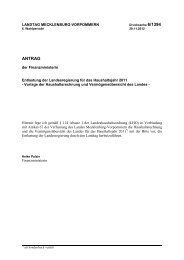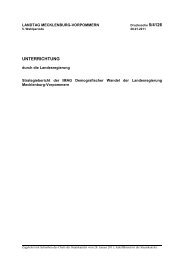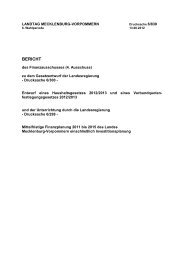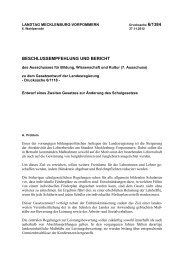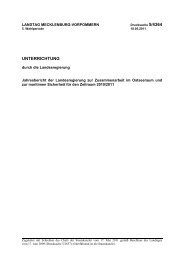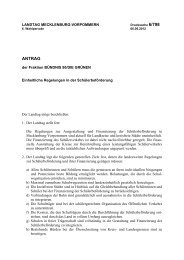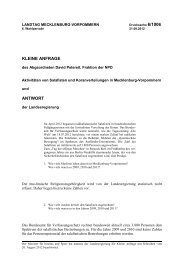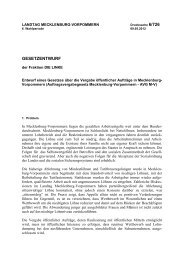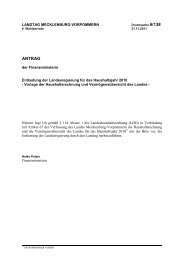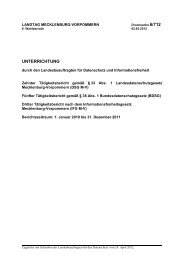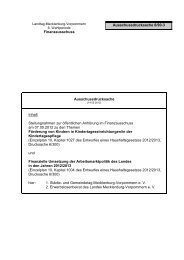Baltic Rim Economies - Baltic Port List
Baltic Rim Economies - Baltic Port List
Baltic Rim Economies - Baltic Port List
You also want an ePaper? Increase the reach of your titles
YUMPU automatically turns print PDFs into web optimized ePapers that Google loves.
Expert article 893 <strong>Baltic</strong> <strong>Rim</strong> <strong>Economies</strong>, 21.12.2011 Quarterly Review 5�2011<br />
Heterogeneity of innovation strategies of Poland’s firms<br />
By Anna Wzi�tek-Kubiak<br />
Innovation plays a critical role in economic growth and<br />
competitiveness. However in respect to intensity of innovation<br />
the New Member States lag behind the incumbent EU<br />
countries. As the NMS firms share characteristics of followers,<br />
imitators, or non-cumulative firms, it is commonly recognised<br />
that their innovation strategies are based on learning coming<br />
from external sources and differ considerably from their<br />
incumbent EU counterparts.<br />
In respect to innovation performance Poland does not differ<br />
from other NMS. In 2008 only 27.9% of Polish enterprises in<br />
industry and services reported innovation activities. This was<br />
almost two times less than the EU-27 average. R&D intensity<br />
(R&D expenditure as % of GDP) of Poland’s economy was<br />
almost three times smaller than the EU-27 average. Only 31 %<br />
of R&D expenditure was financed by the business enterprise,<br />
i.e. much less than the EU-27 average.<br />
On the other hand, Polish innovating enterprises are a<br />
dynamic part of an economy. In last 5 years, the average<br />
dynamics of growth of employment and turnover in Polish<br />
innovation enterprises was one of the highest in the EU-27.<br />
Dynamics of growth of turnover of innovative firms was much<br />
higher than that of employment and both rates were higher<br />
than that of Poland’s economy average. Innovative enterprises<br />
in Poland have increased their productivity to higher degree<br />
than economy average.<br />
As in the case of the incumbent EU countries, Poland’s<br />
innovating enterprises are heterogeneous in respect to<br />
sources of innovation. Introducing cluster analysis which is<br />
based on a wide range of internal and external factors of<br />
innovation that are introduced in Oslo Manual, we select five<br />
types of innovation strategies introduced by Polish innovating<br />
enterprises. These strategies show different ways of<br />
accumulation of knowledge which is used in competition.<br />
Surprisingly, most of these strategies are common to the<br />
incumbent EU countries.<br />
Types of innovation strategies introduces by Polish<br />
innovating firms<br />
R&D based strategy<br />
This is a kind of closed innovation strategy. It is characterised<br />
by a very high R&D intensity, a large share of R&D staff<br />
employed and strong cooperation with R&D organisations.<br />
However, although these firms invest in in-house R&D, they do<br />
not manage to improve the ability to identify, value and apply<br />
other sources of external knowledge coming from suppliers,<br />
customers and competitors. In effect they do not gain benefits<br />
from these cooperation.<br />
Firms on this path to innovation tend to focus on product<br />
innovation. New products are strongly competitive on the<br />
domestic market. However focusing on R&D and neglecting<br />
the role of cooperation with non research partners does not<br />
allow them to gain a strong international competitiveness.<br />
Strategy of open innovation<br />
Firms who pursue this strategy not only do in-house R&D.<br />
They also extensively exploit knowledge from other<br />
organizations. They cooperate in R&D activities with domestic<br />
and foreign research organizations, independent researchers<br />
and with suppliers, customers and competitors. Developing inhouse<br />
innovation capabilities allows these firms to accumulate<br />
and make use of external knowledge extracted from different<br />
innovation partners.<br />
This strategy confirms that external knowledge benefits the<br />
firms that posses innovation potential. Innovation linkages<br />
48<br />
transfer into beneficial ones when they are supported by inhouse<br />
R&D activities.<br />
The share of new products in sales is one of the highest.<br />
The international competitiveness of products and production<br />
technology is also high. Open innovation strategy significantly<br />
enhances firms’ competitiveness.<br />
Users of innovation<br />
This strategy is geared toward process, technology effects. It<br />
involves innovation activities aimed at improving a low level of<br />
technology, i.e. elimination of the main weaknesses of the<br />
firms.<br />
Subcontracting of R&D substitutes in-house R&D which is<br />
low. It is accompanied by intensive cooperation with R&D<br />
organisation. This collaboration is very beneficial and results in<br />
high share of newly introduced products in sales. However<br />
their strong competitiveness on domestic market accompanies<br />
low level of international competitiveness. Comparison of this<br />
strategy with that of open innovation leads to conclusion that<br />
in-house innovation activity serving beneficiary absorption of<br />
external knowledge supports the improvement of international<br />
competitiveness of products.<br />
High profile strategy<br />
Most firms consistently run internal R&D activities and<br />
cooperate with external research organizations, including both<br />
domestic, foreign and independent scientists. These firms<br />
were supported by intensive subcontracting and cooperation.<br />
Such an approach resulted in high benefits that they took from<br />
cooperation with business partners and resulted in high<br />
innovation output and international competitiveness.<br />
Low profile strategy<br />
These firms have very low in-house innovation resources and<br />
activities and cooperation in R&D activities. They still focus on<br />
defensive restructuring. As they benefit from cooperation in<br />
terms of product quality and marketing, the role of diffusion of<br />
external knowledge is very important. However this diffusion<br />
does not translate into international competitiveness of their<br />
products which is weak. They operate in the lower quality<br />
segment of the domestic market where competitiveness of<br />
their products and technology is moderate.<br />
Concluding remarks<br />
Although intensity of innovation and innovation performance of<br />
Polish firms are much lower than that of the incumbent EU<br />
counterparts, there are no large differences in innovation<br />
behaviour and strategies of innovation between Polish<br />
innovating firms and their incumbent EU counterparts. It<br />
suggests that firstly, catching up process is the most dynamic<br />
in the case of Polish innovative firms. Secondly, there is a shift<br />
in competitive pressure of Polish firms form low-quality to<br />
higher quality, innovative products.<br />
Anna Wzi�tek-Kubiak<br />
Professor<br />
Head of Department<br />
Institute of Economics Polish Academy of Science<br />
Poland<br />
� Pan-European Institute � To receive a free copy please register at www.tse.fi/pei �



